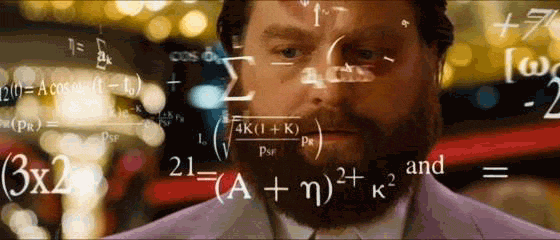For as long as we can remember, diet trends have fought with each other for our business, and things are not slowing down. It seems that every single week there is a new trend or a new diet that is promising all the benefits of the previous diet and more.
Although different trends are arising left and right, two diets have stood the test of time and continue recurring in different forms. Those two diets are low-carb and low-fat. Whether it’s Atkins, Keto, Mediterranean, or Paleo, some form of low-carb or low-fat arises promising to help you lose fat.
If several diets are built from one of these two concepts, it’s worth figuring out why and whether or not these protocols actually work for fat loss.
Let’s dive in.
HOW DOES FAT LOSS WORK?
Understanding the basics of fat loss will allow you to make concrete decisions on what is best for your fat loss journey. Fat loss is made out to be a very complicated process, but it really isn’t. In fact, it’s quite simple.
Have you ever heard someone say “calories in, calories out”? If so, you understand the main principle behind fat loss. Congratulations. Our bodies need fuel to operate, and calories are our form of fuel. When we burn more fuel (calories) in the day than we consume, we lose weight. When we burn fewer fuel in the day than we consume, we gain weight. Keep in mind that losing weight can be different than losing fat. You want to make sure you’re performing a weight training routine while losing fat in order to keep your muscle and have a majority of the weight you lose coming from body fat. Anyway, in order to lose weight (most of which is body fat) you need to be using more energy in the day than you consume. Question is, what can you do to burn more calories in the day than you consume?
HOW TO BE IN A CALORIC DEFICIT
A caloric deficit is a fancy yet way of saying that you’re burning more than you consume in a day. There are a couple of ways you can make this happen. You can either eat less food, perform more activity, or do a combination of both. Note that I am not a supporter of eating less and moving more over and over to lose fat. More is not always better. Regardless, either eating fewer calories, moving more, or a combination of both is required to be in a caloric deficit.
Since this article is about low-carb and low-fat protocols for fat loss, we will stay in our lane and focus on eating less to get into a caloric deficit.
Carbohydrates and fats are two of three major macronutrients. The other is protein. Macronutrients contain the calories that we burn and consume in the day. Carbohydrates and protein contain 4 kcal (calories) per gram, and fat contains 9 kcal per gram. If you passed basic math in elementary school, you’ve hopefully come to the conclusion that if you reduce carbohydrates, you reduce calories. If you reduce fat, you reduce calories.
I know. Super complicated stuff.
But this conclusion begs the question that we’ve been getting to: Which one is better for fat loss?
Before we get into that, though, I want to note a couple more things. Remember that calories in and calories out is what determines fat loss. Also remember that both carbohydrates and fats contain calories. In regards to fat loss, there is nothing innately wrong with carbohydrates, and there is nothing innately wrong with fats. If you reduce calories from carbohydrates to put yourself in a caloric deficit, you will lose fat. If you reduce calories from fat to put yourself in a caloric deficit, you will lose fat. In addition, it is never good to completely cut out a food group in order to lose body fat. As you read, don’t think about going low-carb or low-fat. Think more in terms of LOWER carb and LOWER fat. So the real question is, which one is best not just to lose fat, but best to help you stay consistent in a caloric deficit as well.
STAYING IN A CONSISTENT DEFICIT WITHOUT STRUGGLE
Calories in and calories out is simple, but the way carbohydrates and fats affect our body isn’t quite as simple. Each nutrient affects our digestion, energy, blood sugar, and satiety in a different way. Many of these factors make it easier or harder to stay in a caloric deficit.
This is why, when it comes down to the nitty gritty, I recommend that people go lower carb.
Although carbohydrates contain fewer calories per gram, going lower carb is often a better option for fat loss when compared to lower fat.
One of the big things that hurts us while trying to stay in a consistent caloric deficit are cravings. Cravings are often hard to beat, especially when we are under physical and emotional stress. When we consume carbohydrates, our blood sugar rises, potentially causing cravings. Consuming a diet that is lower in carbohydrates can keep these cravings at bay. The fewer cravings you have, the lower the chance that you consume too much food, taking you into a caloric surplus instead of a caloric deficit. Note that this does not mean carbohydrates should be avoided. Your diet should still consist of healthy, easily digestible carbohydrates to fuel your workout and to optimize your recovery post workout. After all, you can’t just focus on food to lose fat. You need to be weight training while focusing on your strength to promote a healthy metabolism. Carbohydrates play a major role in that.
Not only will a diet lower in carbohydrates keep cravings at bay, but it will also allow room for plenty of healthy fats.
Healthy fats are very satiating. This means that they keep us feeling full much more than carbohydrates do. This is a reason I never recommend cutting down fat to get into a caloric deficit. Healthy fats are also essential for optimal hormone function. A lot of individuals that hire me to help them reach a goal have cut down on fats too hard, all while working out too much and getting far too little sleep. This is a recipe for a hormonal disaster. And even if your deficit has worked before, it may not work well when your hormones are all out of wack. Another reason to keep fats higher while you’re in a deficit.
I must add, though, that the above information isn’t that powerful unless you are weight lifting, and getting plenty of protein in each day. The main force behind our metabolism is our lean muscle tissue. If you are working and fueling to promote more lean muscle tissue, fat loss is far easier. Not only does protein facilitate lean muscle tissue improvement, but it is also important when it comes to satiety and its thermogenic effect. Like fat, protein keeps us satiated and far away from cravings. Like fiber, it also requires more calories burned in order to digest it. Those calories, although not many, can make a difference. You should aim for .8-1g of protein per pound of body weight each day while performing a weight training routine.
THE TAKEAWAY
Staying in a caloric deficit is the key to fat loss. Carbohydrates and fats have calories, so reducing one, the other, or a little bit of both will contribute to a reduction in calories. Remember, it is not about completely cutting carbs or fats out, bur rather cutting enough calories out of your diet to put yourself into a caloric deficit. I recommend slowly reducing your carbohydrate intake while keeping fats relatively high in order to stay full and promote healthy hormone function. Keep some carbs in your diet, though. You’ll need them for your workouts and recovery.
ABOUT THE AUTHOR
Adam is a fitness professional, baseball fan, and cookie fanatic based in Fort Collins, Colorado. After hanging up the cleats, he found a strong interest in the human body and how it performs. Since then, Adam has been transforming lives through fitness in a fun and encouraging atmosphere. As an ACE CPT and Fitness Nutrition Specialist, he is constantly moved to help people improve in all walks of life. If you’re interested in hiring Adam as your coach, fill out an application here.




